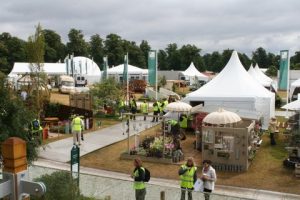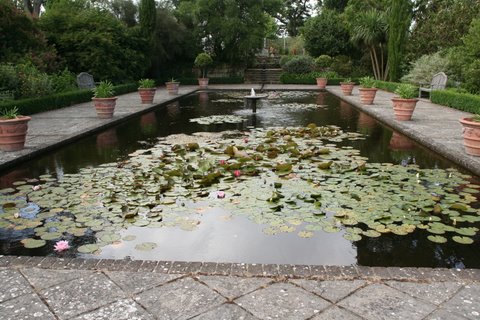London has two great flower shows: Chelsea in May (see 2008 Chelsea Review) and the Hampton Court Palace Flower Show in July (see 2008 Hampton Court Review). I went to Hampton Court yesterday. It rained as I entered and rained as I left – but the sun appeared in between and it was a good day. My interest, of course, was the garden designs. The RHS Best in Show went to a very worthy design by Dorset Cereals for an Edible Playground. It was a good idea for an outdoor learning area, and well made, but it does not make a contribution to garden design as a fine art. The Gardenvisit.com Design Award for Hampton Court 2008 went to the Holiday Inn Green Room designed by Sarah Eberle. Elegant and well-made is scored highly for being just the kind of space we should be making for the city of tomorrow – instead of those wretched garden-centerey plots made by the UK housebuilders who have seen such a spectacular decline in their businesses over the last 12 months.
A focus on domestic gardens is the strength of the Hampton Court Show. Chelsea provides haute couture for gardeners – nice for window shopping but with garden designs on the expensive side of exorbitant. Hampton Court is more like Oxford Street. Designers learn from Chelsea and use the ideas for everyman. To make this policy more apparent, we recommend buying some special fencing for the Hampton Court, to replace the standard contractor’s wire. This would not be to keep people out, as at Glastonbury. It would be to draw people in and provide more context for the garden designs. The fencing designers should learn from Hollywood and make fences which look like English streets from both sides. Visitors would then queue at house doors and enter a garden world, filled with garden designs they can relate to. This is what Oxford Street stores use mannequins for. At present, the garden designs at Hampton Court float in a sea of tents.
We would also like to see a London Garden Summer Show, spread through the capital and lasting for the summer season ( See our note on the proposed Chelsea Fringe Flower and Garden Show).



 The
The